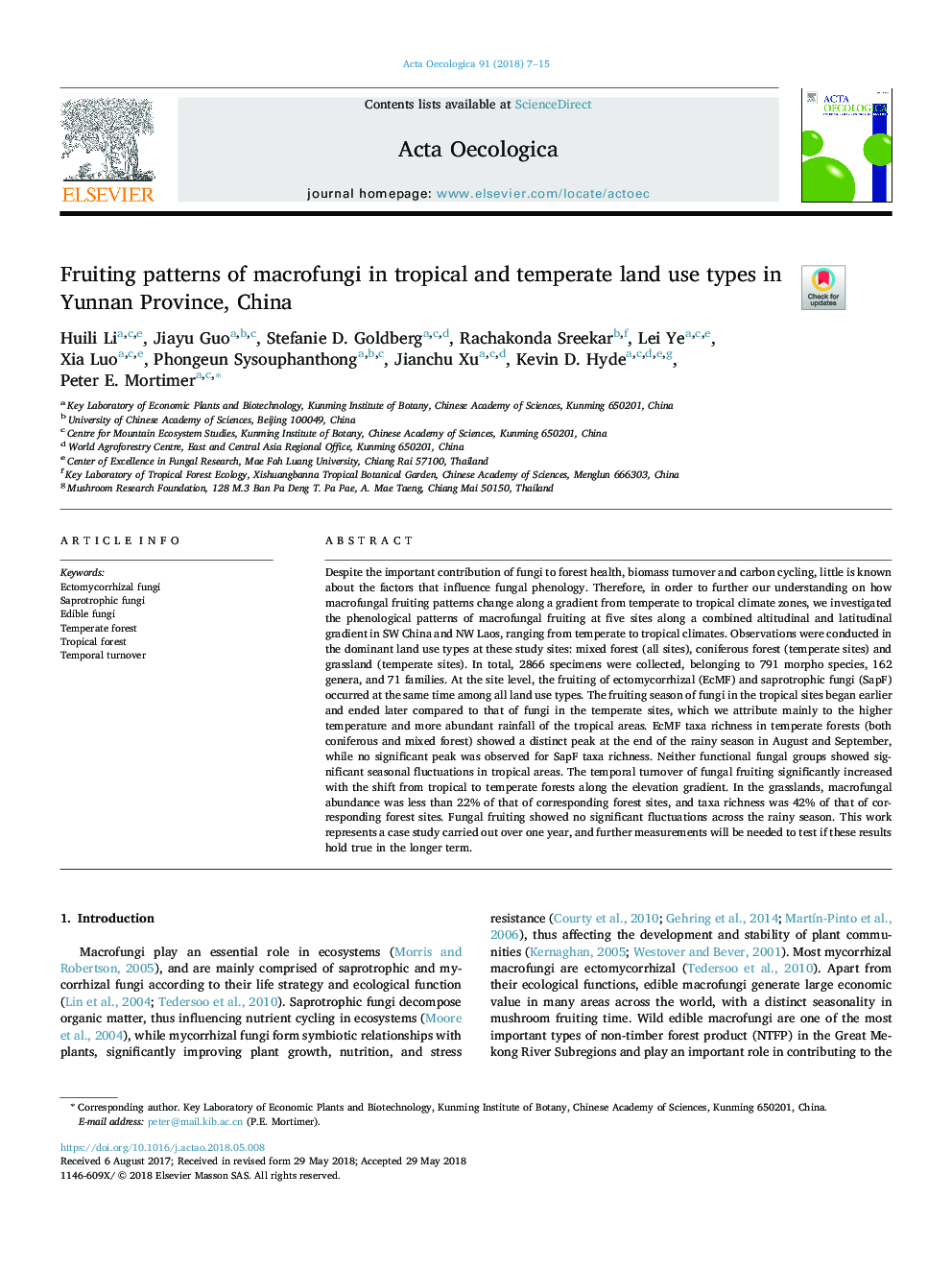| Article ID | Journal | Published Year | Pages | File Type |
|---|---|---|---|---|
| 8846447 | Acta Oecologica | 2018 | 9 Pages |
Abstract
Despite the important contribution of fungi to forest health, biomass turnover and carbon cycling, little is known about the factors that influence fungal phenology. Therefore, in order to further our understanding on how macrofungal fruiting patterns change along a gradient from temperate to tropical climate zones, we investigated the phenological patterns of macrofungal fruiting at five sites along a combined altitudinal and latitudinal gradient in SW China and NW Laos, ranging from temperate to tropical climates. Observations were conducted in the dominant land use types at these study sites: mixed forest (all sites), coniferous forest (temperate sites) and grassland (temperate sites). In total, 2866 specimens were collected, belonging to 791 morpho species, 162 genera, and 71 families. At the site level, the fruiting of ectomycorrhizal (EcMF) and saprotrophic fungi (SapF) occurred at the same time among all land use types. The fruiting season of fungi in the tropical sites began earlier and ended later compared to that of fungi in the temperate sites, which we attribute mainly to the higher temperature and more abundant rainfall of the tropical areas. EcMF taxa richness in temperate forests (both coniferous and mixed forest) showed a distinct peak at the end of the rainy season in August and September, while no significant peak was observed for SapF taxa richness. Neither functional fungal groups showed significant seasonal fluctuations in tropical areas. The temporal turnover of fungal fruiting significantly increased with the shift from tropical to temperate forests along the elevation gradient. In the grasslands, macrofungal abundance was less than 22% of that of corresponding forest sites, and taxa richness was 42% of that of corresponding forest sites. Fungal fruiting showed no significant fluctuations across the rainy season. This work represents a case study carried out over one year, and further measurements will be needed to test if these results hold true in the longer term.
Related Topics
Life Sciences
Agricultural and Biological Sciences
Ecology, Evolution, Behavior and Systematics
Authors
Huili Li, Jiayu Guo, Stefanie D. Goldberg, Rachakonda Sreekar, Lei Ye, Xia Luo, Phongeun Sysouphanthong, Jianchu Xu, Kevin D. Hyde, Peter E. Mortimer,
